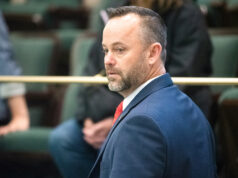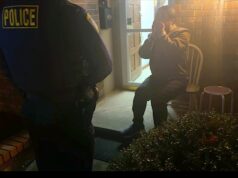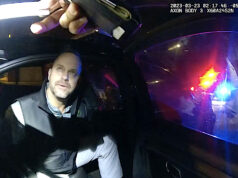
Arbitration that had halted the Oklahoma City Police Department’s body cam-trial period has come to an end, officials announced today during a press conference and via email.
The stalemate goes back to September 2015 when the local police union, Fraternal Order of Police Lodge 123, filed a grievance against OKCPD regarding the launch of its then-pending body-cam program. In late January of this year, the OKCPD implemented its pilot program for body-worn cameras anyway, much to the chagrin of the union. Arbitrators between OKCPD and the union then ruled in June that the pilot program would have to be suspended so formal policies regarding body-cam use, protocols and other issues could be ironed out.
Although previously officials had estimated August as a potential date of resolution to the matter, subsequent reports had pushed that informal deadline back to 2017. With today’s announcement, both the OKCPD and FOP expressed gratitude for cooperation between the two organizations, whose leaders state they ultimately want the same thing.
“Body-worn cameras are an additional tool for better policing that provides more openness and accountability of officers’ and citizens’ actions,” Chief Bill Citty was quoted as saying in the press release.
The FOP included its own statement.
“The OKC FOP has always supported the use of body cameras, and believes these cameras will help exonerate officers of false complaints and reinforce the professional image of Oklahoma City officers,” stated local FOP President John George in the release.
OKCPD body-cam protocols
To that end, details of the agreement regarding body-cam use include when cameras must be activated. Broadly, “… officers must activate body-worn cameras in most situations when performing their official duties on the job,” according to the press release. That includes:
- during voluntary contact with people in public places;
- before detaining someone or using force;
- before exiting their patrol car on high-priority calls;
- during pursuits or sobriety tests;
- when they’re asked to by a supervisor, and in other situations.
Conversely, officers may not activate the cameras:
- when interviewing victims or witnesses and other involved or reporting parties;
- in situations where someone would have a reasonable expectation of privacy;
- in a health care facility, and in other situations.
Also from the release:
After completing body-worn camera training, each officer has a 90-day grace period for unintentionally failing to activate the camera when it’s required. A consistent pattern of failing to activate the camera during the grace period would potentially result in an administrative investigation and corrective action. The cameras will be distributed as evenly as possible across patrol divisions and shifts.
OKCPD will be hiring four new employees to help manage the body-cam system. Although the program has 100 cameras currently, a federal grant of $270,000 will help add 180 more body cams to the program.
Body-worn cameras are slated to be put into use by Jan. 1, 2017, according to a Red Dirt Report story by reporter Heide Brandes.
Community group responds
Daniel Holtzclaw, a former OKCPD officer, was convicted on 18 of 36 counts of various sexually related assaults in January, just before the body-cam program began. When the program was suspended, community leaders found the lengthy arbitration process disconcerting, especially in light of the fact that Holtzclaw had targeted mainly African-American women and girls in his attacks.
In particular, T. Sherri Dickerson, founder of the Oklahoma Black Lives Matter group, told NonDoc in a September statement that the use of such technology would “help encourage more trust” between local law enforcement and communities. Today, Dickerson’s group posted the following commendation of today’s announcement on Facebook:





















